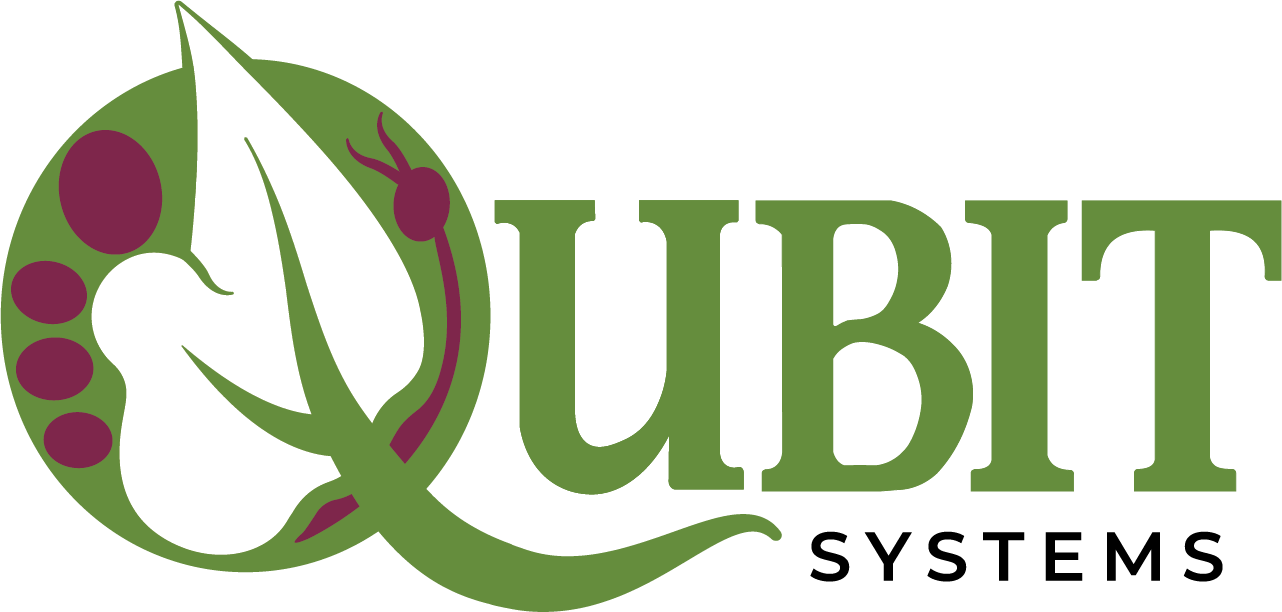Qubit Systems offers field-based instruments (ROX and FLOX) for monitoring solar irradiance, solar reflection and solar-induced fluorescence. Applications include monitoring plant growth, plant biochemical status (e.g., pigment dynamics), photosynthetic activity and variations in environmental conditions (e.g., soil and water characteristics). The instruments are deployable on high or low towers, gantries and balloons for long-term and short-term monitoring. They are ideal for ground-proofing of satellite data and for higher resolution, local measurements of chlorophyll fluorescence and plant reflective indices. Below, we provide summaries of recent research using solar irradiance, solar reflection and solar-induced fluorescence methods. Learn MORE
Recent FLOX Publications

Unpacking the drivers of diurnal dynamics of sun-induced chlorophyll fluorescence (SIF): Canopy structure, plant physiology, instrument configuration and retrival methods. Chang C.Y. et al. (2021) Remote Sensing of Environment 265:112672. https://doi.org/10.1016/j.rse.2021.112672
This study used concurrent ground and airborne canopy-scale and leaf-scale measurements in a corn field to investigate the dynamics of photochemistry and photoprotection in the sub-canopy light environment. When crop rows were north-south oriented, a midday dip in solar -induced fluorescence (SIF) occurred in the absence of stress due to a decline in absorbed photosynthetically active radiation (APAR). Canopy structure caused distinctive responses in the fraction of open photosystem II reaction centers (qL) and non-photochemical quenching (NPQ) that influenced fluorescence quantum yield (ΦF) at the leaf scale. Leaf-level qL and NPQ exhibited strong diurnal dynamics, but their influence was attenuated at the canopy scale due to opposing effects on SIF at different canopy layers. The findings illustrate how crop row structures, variations in canopy structure and plant physiology, as well as instrument configuration, may affect measured dynamics of diurnal SIF, and the importance of these factors when interpreting satellite data.
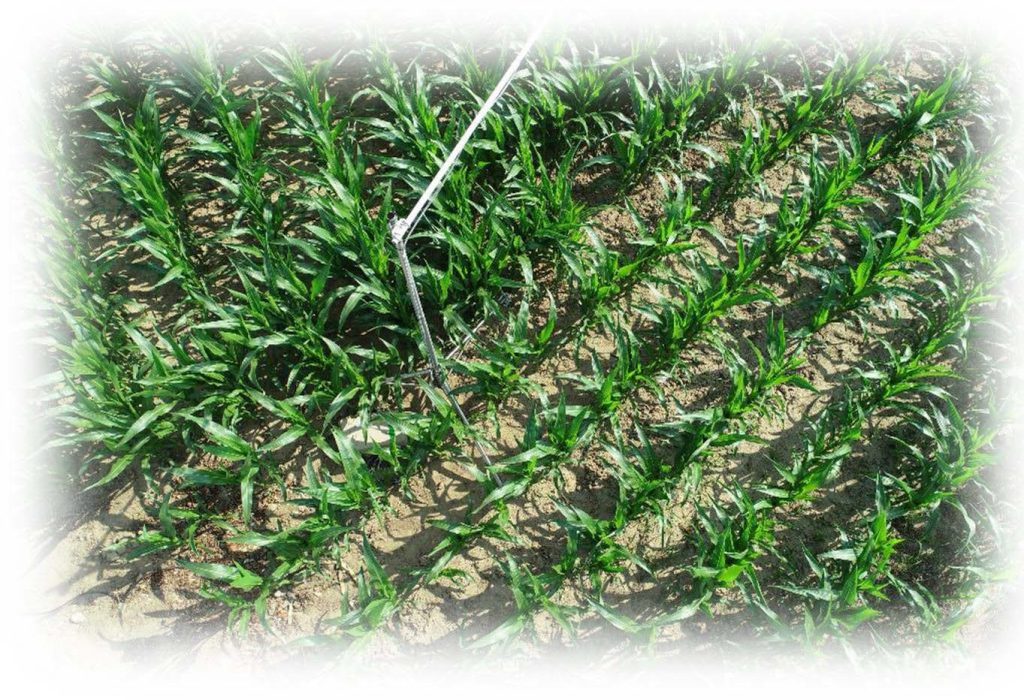
Heatwave breaks down the linearity between sun-induced fluorescence and gross primary production (2022) Martini D. et al. New Phytologist 223: https://doi.org/10.1111/nph.17920
The effect of the 2018 European heatwave (HW) on the GPP–SIF relationship was studies in evergreen broad-leaved trees with a relatively invariant canopy structure. Canopy-scale SIF measurements were combined with gross primary production (GPP) estimated from an eddy covariance tower, and measurements of pulse amplitude modulation fluorescence. The HW caused an inversion of the photosynthesis–fluorescence relationship at both the canopy and leaf scales; the effect being modulated by nonphotochemical quenching (NPQ). Extreme heat stress resulted in plants experiencing a saturation of NPQ, which caused a change in the allocation of energy dissipation pathways towards SIF. The results reveal complex modulation of the NPQ–SIF–GPP relationship during extreme heat stress.
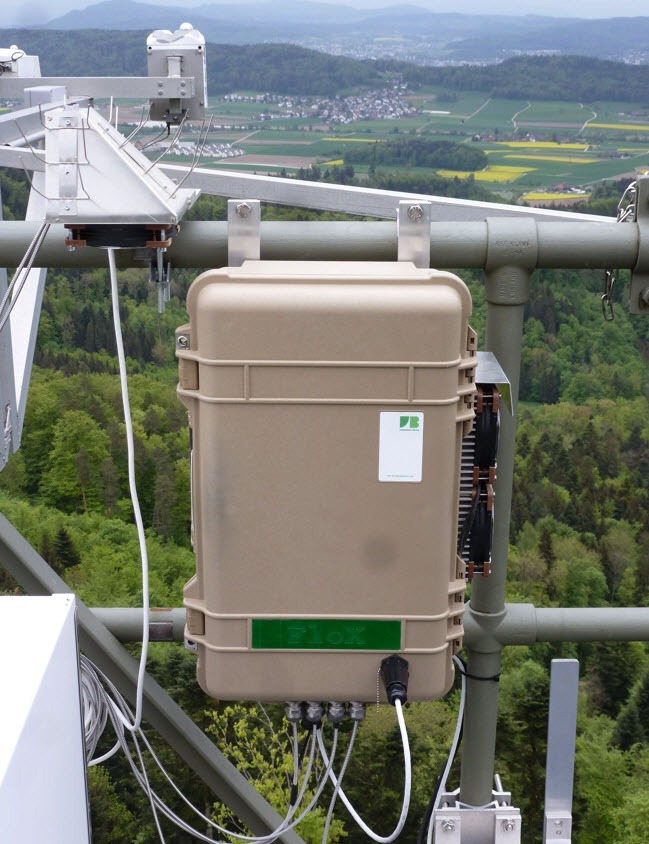
Physiological dynamics dominate the response of canopy far-red solar-induced fluorescence to herbicide treatment: L. Wu et al. (2022) Agricultural and Forest Meteorology 323.
https://doi.org/10.1016/j.agrformet.2022.109063
Continuous eddy covariance flux and far-red SIF measurements were made in an early stage herbicide-resistant maize field to study herbicide effects on weeds. The performance of SIF, gross primary production (GPP), and vegetation indices (VIs) were assessed in evaluating herbicide stress. SIF increased rapidly in response to herbicide treatments, and GPP decreased. Both were more responsive than VIs in capturing the early effects of herbicides. Opposing responses in SIF and GPP disrupted their otherwise linear relationship during herbicide treatment. More importantly, it was found that increased physiological effects dominated the variation of SIF during the early stages of herbicide stress, while non-physiological effects were prominent in the variability of SIF in the absence of herbicide. The findings advance the understanding of how SIF responds to herbicide stress in heterogeneous crop land.
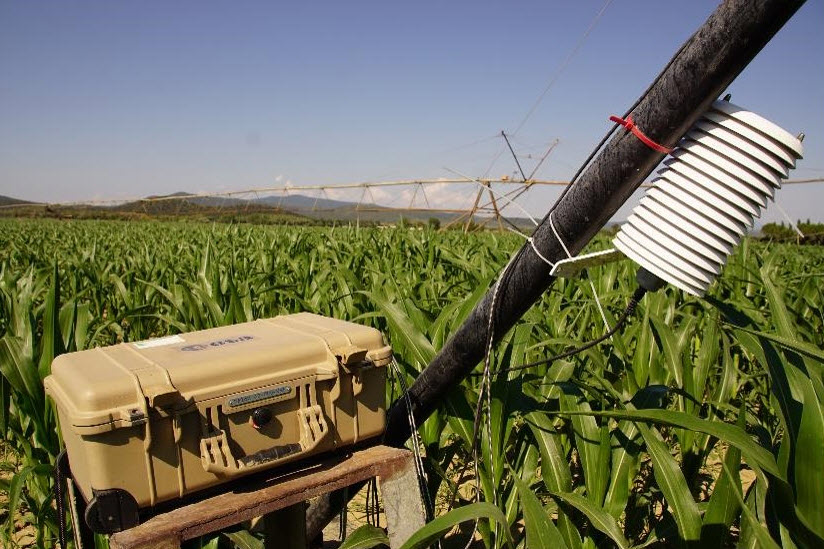
Recent ROX Publications
The ROX is an automated field spectroscopy device capable of collecting unattended, continuous, long-term hyperspectral measurements. It was developed from a collaboration between the Jülich Research Center and the Remote Sensing of Environmental Dynamics Laboratory of the University Milano Bicocca and is designed for long-term measurements of solar radiance, reflected radiance, and reflectance. Its robustness and flexibility make the ROX suitable for numerous applications including vegetation monitoring (numerous reflective vegetation indices such as NDVI, PRI, etc.) and monitoring water quality, snow, and ice.
Preliminary Investigation on Phytoplankton Dynamics and Primary Production Models in an Oligotrophic Lake from rremote Sensing Measurements (2021) I. Cesana et al. (2021) Sensors 21(15) 5072 https://www.mdpi.com/1424-8220/21/15/5072

A series of methods relying on hyperspectral measurements were used to characterize phytoplankton in clear lake waters. Analysis of phytoplankton temporal evolutions involved exploiting remote sensed indices and metrics linked to the amount of light reaching the target (EPAR), the chlorophyll-a concentration ([Chl-a]OC4) and a fluorescence emission proxy. A decline in the FFLH metric and the [Chl-a]OC4 index was observed around the solar noon during the clear-sky days. Water samples were analyzed to evaluate in-situ fluorescence (FF) and absorbed light (FA), and the relationship between remotely sensed values and in-situ values was assessed to develop and test phytoplankton primary production (PP) models. Promising results were achieved, supporting PP monitoring in inland waters by means of remote sensing-based indices and fluorescence metrics.
Retrival of Dust Properties From Spectral Snow Reflectance Measurements (2021) A. Kokhanovsky, B. Di Mauro, R. Garzonio, R. Colombo Front. Environ. Sci. https://www.frontiersin.org/articles/10.3389/fenvs.2021.644551/full
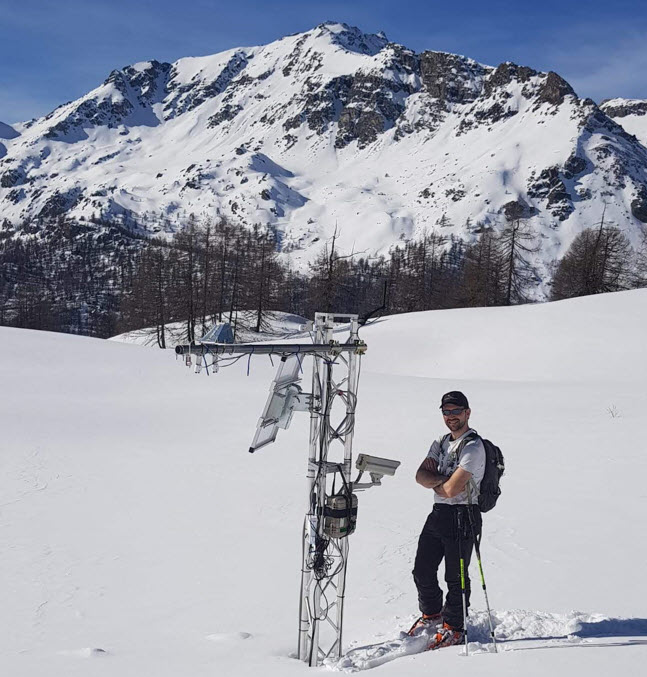
A simplified algorithm was developed to retrieve snow grain size, dust mass absorption coefficient and dust mass concentration from spectral diffuse reflectance measurements at three wavelengths in the visible and near infrared. The theoretical model was compared with field spectroscopy data collected on different days from an automated ROX spectrometer in the Alps. The modeling results were comparable with data focusing on the impact of dust in snow. The technique can be applied to analysis of snow reflectance spectra related to the strength of absorption by pollutants.
Changes of NOx in urban air detected with monitoring VIS-NIR field spectrometer during the coronavirus pandemic: A case study in Germany. (2020) P. Näthe, M. Delaney, T. Julitta. Science of The Total Environment. Vol 748, 141286 https://www.sciencedirect.com/science/article/pii/S0048969720348154
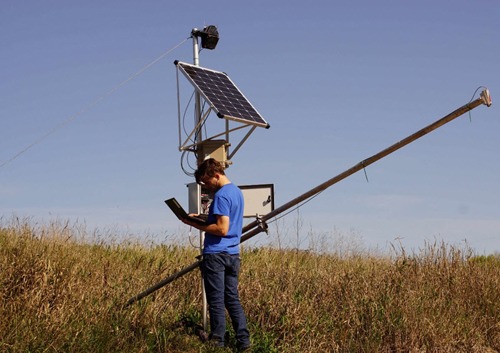
Sudden change in NO2 emissions related to reduction of urban traffic resulting from COVID-19 protection measures were detected in Düsseldorf, Germany by continuous measurements of down-welling light using a ROX automated field-spectrometer. A 590 nm waveband around was identified as significant for the retrieval in the VIS-NIR spectral range. A decision tree approach based on principal components decomposed from down-welling radiance spectra was used to retrieve NO2 values. Traffic-related changes in NOx pollution in urban air could be detected through continuous down-welling radiance measurements with the inexpensive automated field-spectrometer ROX instrument
Upcoming Conferences
Please visit the Qubit exhibit to learn more about the ROX and FLOX and Qubit’s other instrumentation for monitoring plants, algae and the environment.
2022 ASA, CSSA, SSSA International Annual Meeting. November 6-9 | Baltimore, Maryland, USA.
American Geophysical Union Fall Meeting. December 12-16, Chicago, Illinois, USA.
Qubit Systems is also proud to sponsor the seventh Plant Phenotyping and Imaging Research Centre Symposium at the University of Saskatoon, Saskatchewan, Canada.


